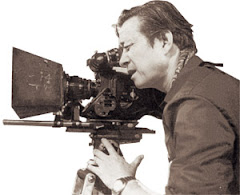Monday, July 6, 2009
The Housemaid
This film uses very active camera techniques including tracking and zooming in on the characters. The use of fill lighting is also appropriate for emphasizing the relations in the film. the recursive item of the poison in the film is symbolic of the flaws of quick solutions to try and solve longer lasting problems (the rats and the housemaid). it was interesting that the non-diegetic sound was only used in extremely dramatic sequences and that most of the film relied directly on diegetic sound. the actress who played the housemaid did a wonderful job at coaxing screams/ reactions from the audience (even in our modern audience) showing her mastery of her character.
- James Seiling
Subscribe to:
Post Comments (Atom)

It is debatable weather this is a horror movie or comedy or drama. Basically, unlike the first movie (Homeless Angels), the camera angle and the story was more dynamic. There was foreshadowing, special effect of rain and lighting strikes.
ReplyDeleteWhile watching the movie, I was trying to see how the movie related to Korean history of 1960s, and why the movie focused on adultery if such actions were viewed with scorn. Well Korea was developing and implementing reformation policy since the war had ended in 1953. As more modernization and western influence merged with developing Korea, I believe that movie was trying to deliver a message of how Korea was losing its tradition. It also showed class distinction of how factory workers (or lower class people)and middle class had begun to slip apart ever since capitalism was brought to South Korea. It is interesting to see how the husband tries to relief himself from misery but worries more about the financial status and providing food to his family. However, the story of the movie is some how projecting South Korea of today, and perhaps this may be the reason why that the movie is still not forgotten.